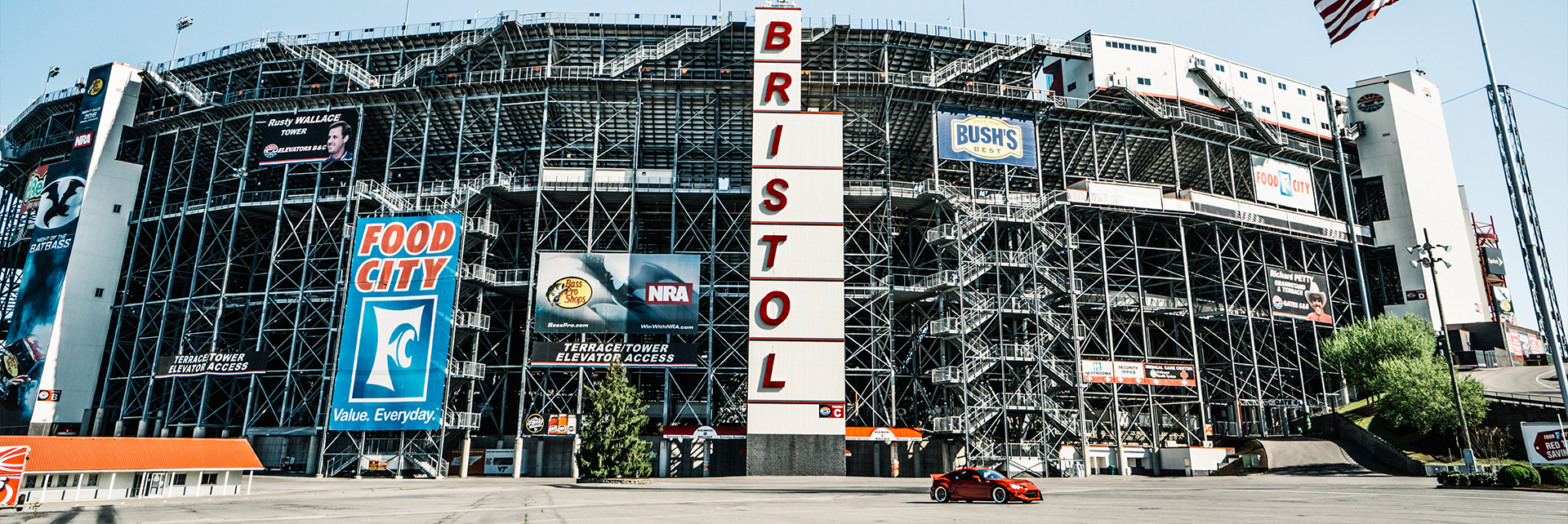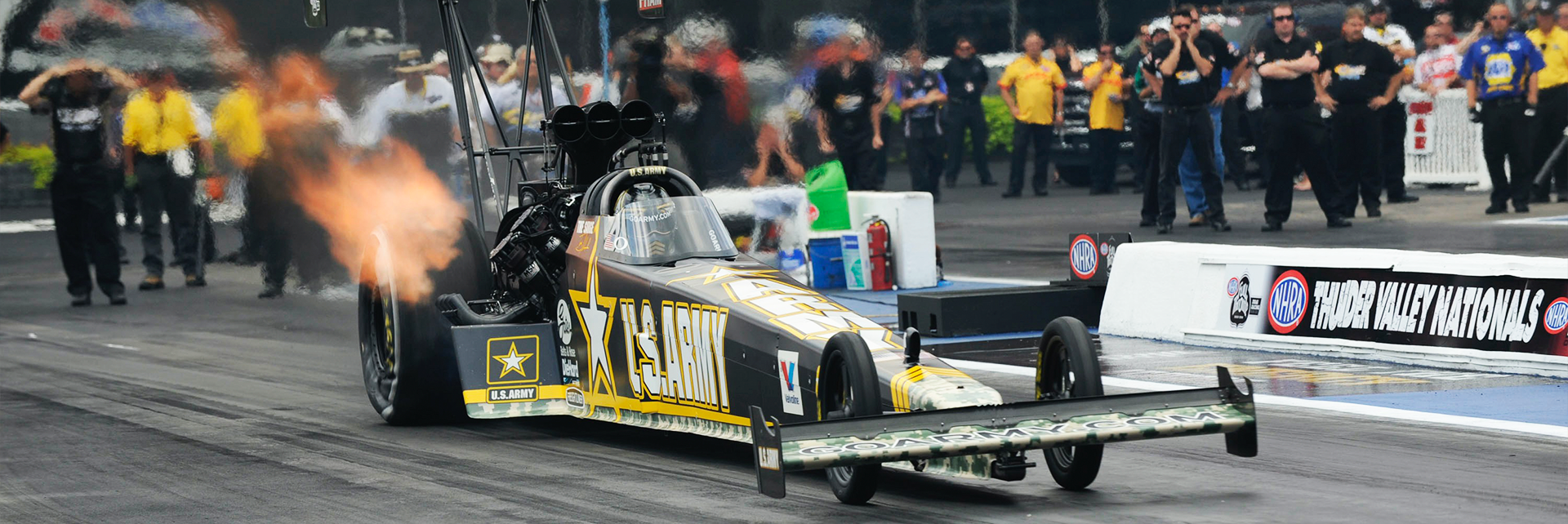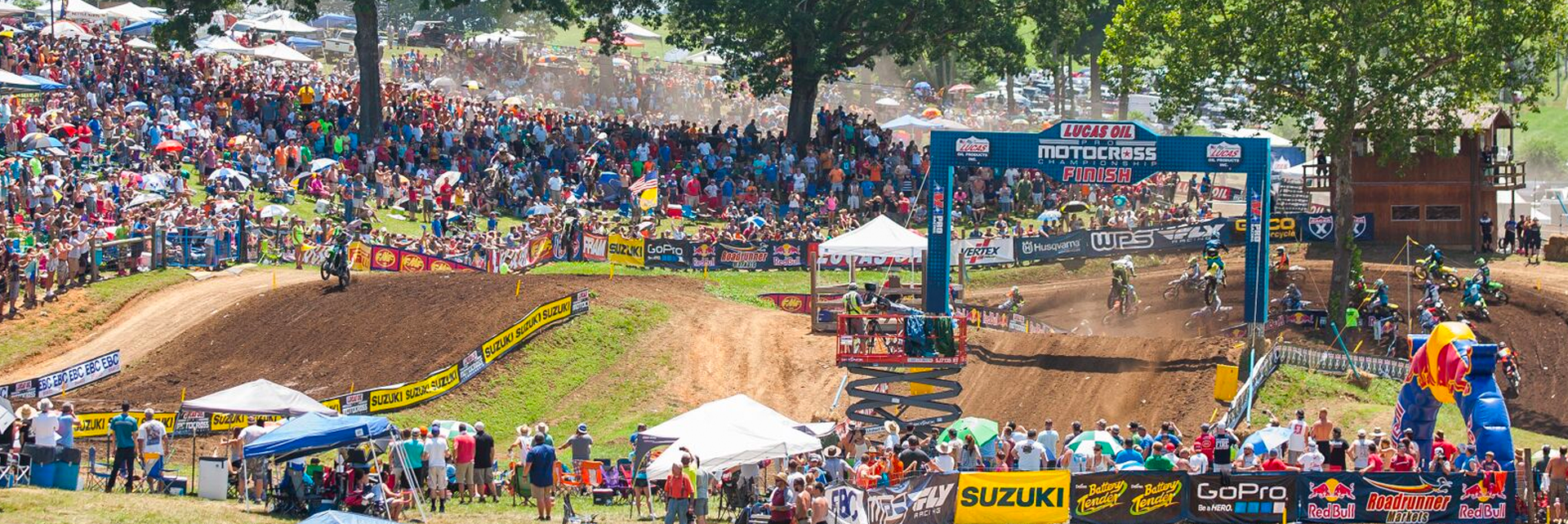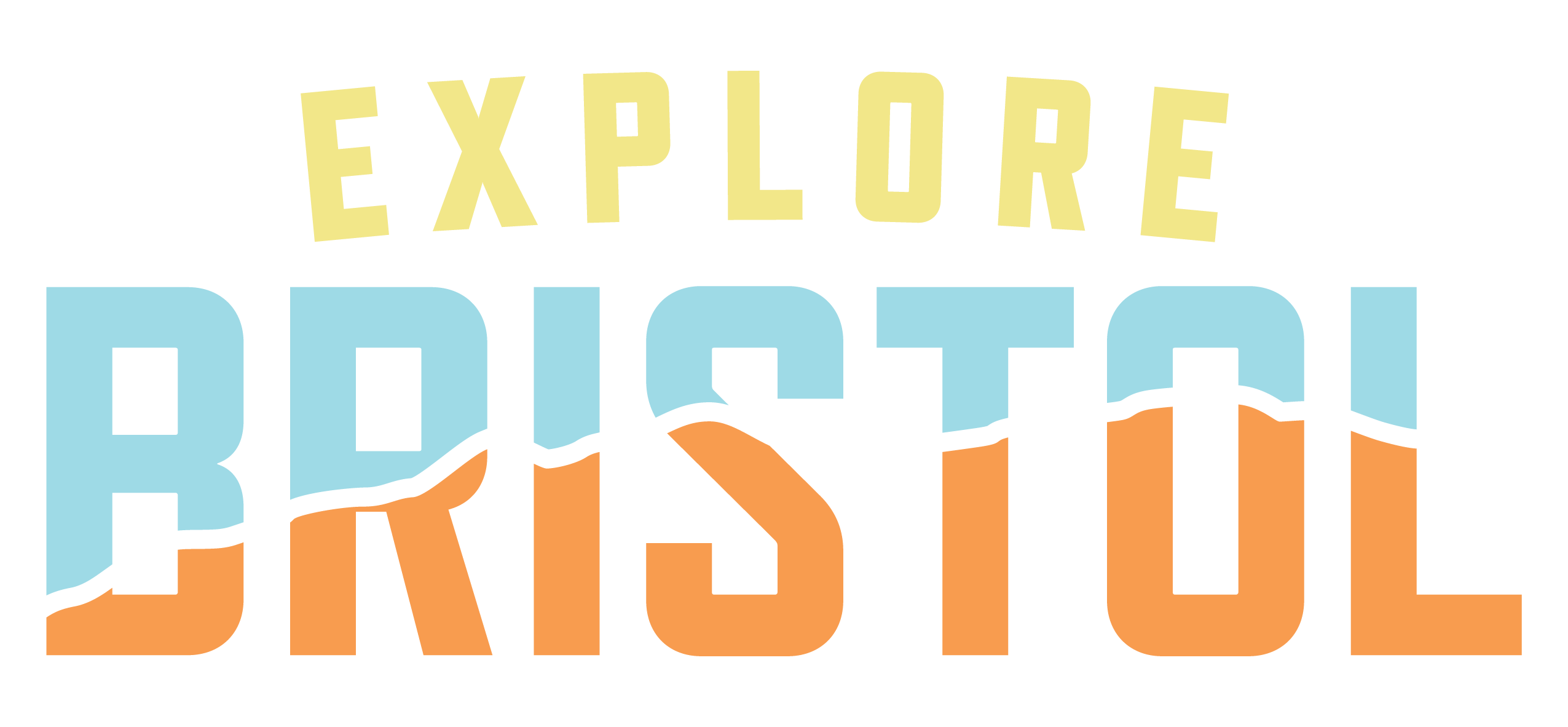IT’S BRISTOL BABY
Bristol Motor Speedway

HIDDEN
The Last Great Colosseum. The World’s Fastest Half-Mile. The Bristol Bullring. The Colosseum of Crash. Thunder Valley.
Those Bristol Motor Speedway nicknames couldn’t be more appropriate. When you first see the iconic race track, which sits in the foothills of the Appalachian Mountains, it’s impossible not to think of Rome’s legendary Colosseum where gladiators did battle – just as they do today but only with race cars. The .533-mile oval’s tight confines feature an abundance of speed, noise, and wrecks, which can often lead to hot tempers and scuffles among the drives – all of which have helped make BMS one of NASCAR’s most popular race tracks.
In its infancy, as is true now, those factors made BMS a playground for the sport’s biggest names, including “The King,” Richard Petty, as well as David Pearson, Bobby Allison, and Cale Yarborough. Dale Earnhardt, who won nine times at Bristol, liked to say, “If you don’t like racing at Bristol, you’re not a real race car driver,” which has been echoed by many other Bristol winners and NASCAR champions, such as Darrell Waltrip, Rusty Wallace, Kyle Busch, Jeff Gordon, and Kurt Busch.
The brainchild of Bristol entrepreneurs Larry Carrier, Carl Moore, and R.G. Pope, Bristol International Speedway, as it was first known, opened in 1961. At that time, the track measured a perfect half-mile and featured 22-degree banking in the corners. Seating capacity was a mere 18,000 for the first NASCAR race in July of 1961.
Eight years after it opened for NASCAR races, the track was reshaped and re-measured, turning it into a .533-mile oval with 36-degree banking, which was among the steepest in the sport at that time. It also made it one of the fastest tracks on the circuit, helping make it a favorite among drivers.
Other early-year highlights include:
- The track was sold in 1976 to Lanny Hester and Gary Baker, and in 1978, they changed its name to Bristol International Raceway
- In August 1978, the first night race was held on the oval
- In April 1982, Hester sold his half of the speedway to Warner Hodgdon
- In July 1983, Hodgdon purchased the other half of the track from Baker. He appointed Carrier as the track’s general manager.
- Carrier took possession of the speedway after Hodgdon filed for bankruptcy
- In August 1992, BIR became the first race track to host a Cup race on a concrete track surface
- On Jan. 22, 1996, Carrier sold BIR to Bruton Smith
Once Smith purchased the speedway, he hired Jeff Byrd as its general manager, and the track, already a fan favorite, began to explode in popularity. The track’s name was changed to Bristol Motor Speedway, and by August 1996, Smith had already added 15,000 more seats to bring its capacity to 86,000.
By April 1997, the track’s seating capacity was at 118,000 – making it the largest sports arena in Tennessee and one of the largest in the country – and nearly two dozen skyboxes had been built. Over the next several years, Smith continued to add seating and skyboxes, finally topping out at 160,000 seats and approximately 200 suites.
The beloved speedway, which was resurfaced in 2007, has come a long way from its early days. Today, BMS, which sold out 55 straight races through March 2010, offers guests a wide range of accommodations, from man cave suites to barstools to a relaxing environment high atop the track at the Turn One Tavern to a nightclub inside the oval called The Apex. Spectators also get to enjoy Colossus T.V., the world’s largest outdoor center-hung four-sided video screen with a 540,000-watt audio system.
BMS, which hosted an NFL exhibition in 1961 between Washington and Philadelphia, also made history when, in 2016, it became the site of the largest crowd to witness a college football game. The University of Tennessee and Virginia Tech played before a sellout crowd of nearly 157,000. The track also hosts monster truck races, Speedway In Lights, an annual holiday drive-through event and fundraiser for Speedway Children’s Charities, concerts and other events.
To learn more about Bristol Motor Speedway, which offers track tours, visit www.bristolmotorspeedway.com
Click to learn more about One of NASCAR’s Most Iconic and Popular Tracks
The Last Great Colosseum. The World’s Fastest Half-Mile. The Bristol Bullring. The Colosseum of Crash. Thunder Valley.
Those Bristol Motor Speedway nicknames couldn’t be more appropriate. When you first see the iconic race track, which sits in the foothills of the Appalachian Mountains, it’s impossible not to think of Rome’s legendary Colosseum where gladiators did battle – just as they do today but only with race cars. The .533-mile oval’s tight confines feature an abundance of speed, noise, and wrecks, which can often lead to hot tempers and scuffles among the drives – all of which have helped make BMS one of NASCAR’s most popular race tracks.
In its infancy, as is true now, those factors made BMS a playground for the sport’s biggest names, including “The King,” Richard Petty, as well as David Pearson, Bobby Allison, and Cale Yarborough. Dale Earnhardt, who won nine times at Bristol, liked to say, “If you don’t like racing at Bristol, you’re not a real race car driver,” which has been echoed by many other Bristol winners and NASCAR champions, such as Darrell Waltrip, Rusty Wallace, Kyle Busch, Jeff Gordon, and Kurt Busch.
The brainchild of Bristol entrepreneurs Larry Carrier, Carl Moore, and R.G. Pope, Bristol International Speedway, as it was first known, opened in 1961. At that time, the track measured a perfect half-mile and featured 22-degree banking in the corners. Seating capacity was a mere 18,000 for the first NASCAR race in July of 1961.
Eight years after it opened for NASCAR races, the track was reshaped and re-measured, turning it into a .533-mile oval with 36-degree banking, which was among the steepest in the sport at that time. It also made it one of the fastest tracks on the circuit, helping make it a favorite among drivers.
Other early-year highlights include:
- The track was sold in 1976 to Lanny Hester and Gary Baker, and in 1978, they changed its name to Bristol International Raceway
- In August 1978, the first night race was held on the oval
- In April 1982, Hester sold his half of the speedway to Warner Hodgdon
- In July 1983, Hodgdon purchased the other half of the track from Baker. He appointed Carrier as the track’s general manager.
- Carrier took possession of the speedway after Hodgdon filed for bankruptcy
- In August 1992, BIR became the first race track to host a Cup race on a concrete track surface
- On Jan. 22, 1996, Carrier sold BIR to Bruton Smith
Once Smith purchased the speedway, he hired Jeff Byrd as its general manager, and the track, already a fan favorite, began to explode in popularity. The track’s name was changed to Bristol Motor Speedway, and by August 1996, Smith had already added 15,000 more seats to bring its capacity to 86,000.
By April 1997, the track’s seating capacity was at 118,000 – making it the largest sports arena in Tennessee and one of the largest in the country – and nearly two dozen skyboxes had been built. Over the next several years, Smith continued to add seating and skyboxes, finally topping out at 160,000 seats and approximately 200 suites.
The beloved speedway, which was resurfaced in 2007, has come a long way from its early days. Today, BMS, which sold out 55 straight races through March 2010, offers guests a wide range of accommodations, from man cave suites to barstools to a relaxing environment high atop the track at the Turn One Tavern to a nightclub inside the oval called The Apex. Spectators also get to enjoy Colossus T.V., the world’s largest outdoor center-hung four-sided video screen with a 540,000-watt audio system.
BMS, which hosted an NFL exhibition in 1961 between Washington and Philadelphia, also made history when, in 2016, it became the site of the largest crowd to witness a college football game. The University of Tennessee and Virginia Tech played before a sellout crowd of nearly 157,000. The track also hosts monster truck races, Speedway In Lights, an annual holiday drive-through event and fundraiser for Speedway Children’s Charities, concerts and other events.
To learn more about Bristol Motor Speedway, which offers track tours, visit www.bristolmotorspeedway.com
THUNDER VALLEY

HIDDEN
The Last Great Colosseum. The World’s Fastest Half-Mile. The Bristol Bullring. The Colosseum of Crash. Thunder Valley.
Those Bristol Motor Speedway nicknames couldn’t be more appropriate. When you first see the iconic race track, which sits in the foothills of the Appalachian Mountains, it’s impossible not to think of Rome’s legendary Colosseum where gladiators did battle – just as they do today but only with race cars. The .533-mile oval’s tight confines feature an abundance of speed, noise, and wrecks, which can often lead to hot tempers and scuffles among the drives – all of which have helped make BMS one of NASCAR’s most popular race tracks.
In its infancy, as is true now, those factors made BMS a playground for the sport’s biggest names, including “The King,” Richard Petty, as well as David Pearson, Bobby Allison, and Cale Yarborough. Dale Earnhardt, who won nine times at Bristol, liked to say, “If you don’t like racing at Bristol, you’re not a real race car driver,” which has been echoed by many other Bristol winners and NASCAR champions, such as Darrell Waltrip, Rusty Wallace, Kyle Busch, Jeff Gordon, and Kurt Busch.
The brainchild of Bristol entrepreneurs Larry Carrier, Carl Moore, and R.G. Pope, Bristol International Speedway, as it was first known, opened in 1961. At that time, the track measured a perfect half-mile and featured 22-degree banking in the corners. Seating capacity was a mere 18,000 for the first NASCAR race in July of 1961.
Eight years after it opened for NASCAR races, the track was reshaped and re-measured, turning it into a .533-mile oval with 36-degree banking, which was among the steepest in the sport at that time. It also made it one of the fastest tracks on the circuit, helping make it a favorite among drivers.
Other early-year highlights include:
- The track was sold in 1976 to Lanny Hester and Gary Baker, and in 1978, they changed its name to Bristol International Raceway
- In August 1978, the first night race was held on the oval
- In April 1982, Hester sold his half of the speedway to Warner Hodgdon
- In July 1983, Hodgdon purchased the other half of the track from Baker. He appointed Carrier as the track’s general manager.
- Carrier took possession of the speedway after Hodgdon filed for bankruptcy
- In August 1992, BIR became the first race track to host a Cup race on a concrete track surface
- On Jan. 22, 1996, Carrier sold BIR to Bruton Smith
Once Smith purchased the speedway, he hired Jeff Byrd as its general manager, and the track, already a fan favorite, began to explode in popularity. The track’s name was changed to Bristol Motor Speedway, and by August 1996, Smith had already added 15,000 more seats to bring its capacity to 86,000.
By April 1997, the track’s seating capacity was at 118,000 – making it the largest sports arena in Tennessee and one of the largest in the country – and nearly two dozen skyboxes had been built. Over the next several years, Smith continued to add seating and skyboxes, finally topping out at 160,000 seats and approximately 200 suites.
The beloved speedway, which was resurfaced in 2007, has come a long way from its early days. Today, BMS, which sold out 55 straight races through March 2010, offers guests a wide range of accommodations, from man cave suites to barstools to a relaxing environment high atop the track at the Turn One Tavern to a nightclub inside the oval called The Apex. Spectators also get to enjoy Colossus T.V., the world’s largest outdoor center-hung four-sided video screen with a 540,000-watt audio system.
BMS, which hosted an NFL exhibition in 1961 between Washington and Philadelphia, also made history when, in 2016, it became the site of the largest crowd to witness a college football game. The University of Tennessee and Virginia Tech played before a sellout crowd of nearly 157,000. The track also hosts monster truck races, Speedway In Lights, an annual holiday drive-through event and fundraiser for Speedway Children’s Charities, concerts and other events.
To learn more about Bristol Motor Speedway, which offers track tours, visit www.bristolmotorspeedway.com
Click to learn more about the unique bristol dragway strip
Once you visit Bristol Dragway for a National Hot Rod Association (NHRA) race, you’ll understand how it got its nickname – Thunder Valley.
Sitting amongst the mountains and carved between two hills is the legendary quarter-mile dragstrip where cars explode off the starting line and hit speeds of more than 330 mph., resulting in a thundering sound unique to Bristol. The picturesque setting, the speeds, and the legends of drag racing make Bristol one of the most sought-after tickets on the NHRA circuit.
Built by Larry Carrier, Carl Moore, and Hal Hamrick in 1965, four years after Bristol Motor Speedway opened, the facility was ahead of its time. At the cost of approximately $1 million, the trio developed a state-of-the-art super dragway that had no equal. Bristol International Dragway, as it was initially called, was, without question, the premier dragstrip in the country.
The dragway, which boasted 15,000 seats, hosted NHRA races when it first opened, and American Hot Rod Association events and International Hot Rod Association races in subsequent years. After changing ownership a couple of times, in 1996, Bruton Smith purchased the facility and renamed it Bristol Dragway. After the 1997 season, Smith and racing legends John Force and Kenny Bernstein blew up the old tower and built a new, $18 million facility. And, as it was when it was first built, it was considered a showplace, the finest drag racing facility in the country.
The dragway features a professional pit area that can accommodate over 100 cars and transporters, while the sportsman area can accommodate up to 500 vehicles. It sits at an elevation of 1,475 feet, boasts a 3,800-foot dragway with 700 feet of concrete, a control tower, grandstands, support buildings, and a $500,000 Musco sports lighting system.
Bristol Dragway hosted the NHRA’s inaugural Winston Showdown in 1999, pitting Top Fuel dragsters against Funny Cars for the first time. After the 2000 Showdown, BD hosted its first NHRA points race since the 1967 season – the 2001 O’Reilly Auto Parts NHRA Thunder Valley Nationals.
Upon the completion of the 2004 season, a new terrace section, with nearly 3,500 seats, was added above the existing grandstand on the left side of the dragway. Corporate suites topped the terrace section while the Thunder Valley Club – on the right side of the dragstrip, doubled in size to 1,000 seats. With the latest additions, Bristol Dragway now seats approximately 30,000.
The Thunder Valley Nationals have been held in April, May, June, and most recently in October. Bristol Dragway also runs bracket races, monster truck shows, concerts, and various other drag racing events.
For more information about Bristol Dragway, visit https://www.bristolmotorspeedway.com/dragway/
MUDDY CREEK RACEWAY

HIDDEN
The Last Great Colosseum. The World’s Fastest Half-Mile. The Bristol Bullring. The Colosseum of Crash. Thunder Valley.
Those Bristol Motor Speedway nicknames couldn’t be more appropriate. When you first see the iconic race track, which sits in the foothills of the Appalachian Mountains, it’s impossible not to think of Rome’s legendary Colosseum where gladiators did battle – just as they do today but only with race cars. The .533-mile oval’s tight confines feature an abundance of speed, noise, and wrecks, which can often lead to hot tempers and scuffles among the drives – all of which have helped make BMS one of NASCAR’s most popular race tracks.
In its infancy, as is true now, those factors made BMS a playground for the sport’s biggest names, including “The King,” Richard Petty, as well as David Pearson, Bobby Allison, and Cale Yarborough. Dale Earnhardt, who won nine times at Bristol, liked to say, “If you don’t like racing at Bristol, you’re not a real race car driver,” which has been echoed by many other Bristol winners and NASCAR champions, such as Darrell Waltrip, Rusty Wallace, Kyle Busch, Jeff Gordon, and Kurt Busch.
The brainchild of Bristol entrepreneurs Larry Carrier, Carl Moore, and R.G. Pope, Bristol International Speedway, as it was first known, opened in 1961. At that time, the track measured a perfect half-mile and featured 22-degree banking in the corners. Seating capacity was a mere 18,000 for the first NASCAR race in July of 1961.
Eight years after it opened for NASCAR races, the track was reshaped and re-measured, turning it into a .533-mile oval with 36-degree banking, which was among the steepest in the sport at that time. It also made it one of the fastest tracks on the circuit, helping make it a favorite among drivers.
Other early-year highlights include:
- The track was sold in 1976 to Lanny Hester and Gary Baker, and in 1978, they changed its name to Bristol International Raceway
- In August 1978, the first night race was held on the oval
- In April 1982, Hester sold his half of the speedway to Warner Hodgdon
- In July 1983, Hodgdon purchased the other half of the track from Baker. He appointed Carrier as the track’s general manager.
- Carrier took possession of the speedway after Hodgdon filed for bankruptcy
- In August 1992, BIR became the first race track to host a Cup race on a concrete track surface
- On Jan. 22, 1996, Carrier sold BIR to Bruton Smith
Once Smith purchased the speedway, he hired Jeff Byrd as its general manager, and the track, already a fan favorite, began to explode in popularity. The track’s name was changed to Bristol Motor Speedway, and by August 1996, Smith had already added 15,000 more seats to bring its capacity to 86,000.
By April 1997, the track’s seating capacity was at 118,000 – making it the largest sports arena in Tennessee and one of the largest in the country – and nearly two dozen skyboxes had been built. Over the next several years, Smith continued to add seating and skyboxes, finally topping out at 160,000 seats and approximately 200 suites.
The beloved speedway, which was resurfaced in 2007, has come a long way from its early days. Today, BMS, which sold out 55 straight races through March 2010, offers guests a wide range of accommodations, from man cave suites to barstools to a relaxing environment high atop the track at the Turn One Tavern to a nightclub inside the oval called The Apex. Spectators also get to enjoy Colossus T.V., the world’s largest outdoor center-hung four-sided video screen with a 540,000-watt audio system.
BMS, which hosted an NFL exhibition in 1961 between Washington and Philadelphia, also made history when, in 2016, it became the site of the largest crowd to witness a college football game. The University of Tennessee and Virginia Tech played before a sellout crowd of nearly 157,000. The track also hosts monster truck races, Speedway In Lights, an annual holiday drive-through event and fundraiser for Speedway Children’s Charities, concerts and other events.
To learn more about Bristol Motor Speedway, which offers track tours, visit www.bristolmotorspeedway.com
Click to learn more about muddy creek
Muddy Creek Raceway is part of Victory Sports Racing. Established in the late 70s by Paul Baskett and family has been featured in SPORTS ILLUSTRATED Magazine.
